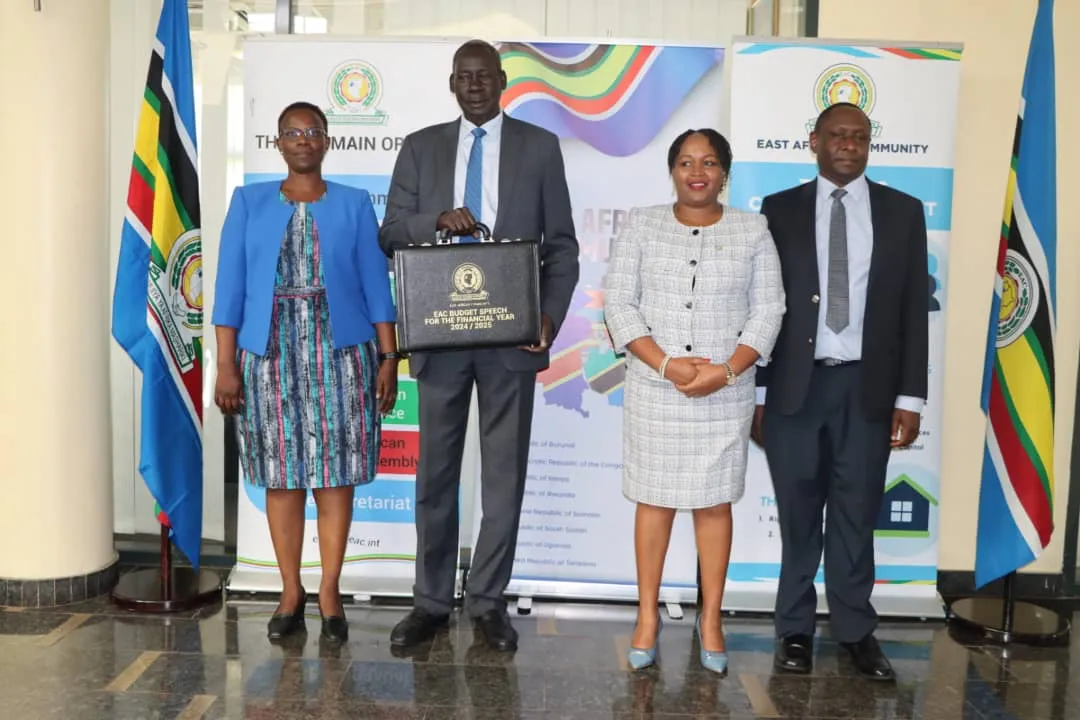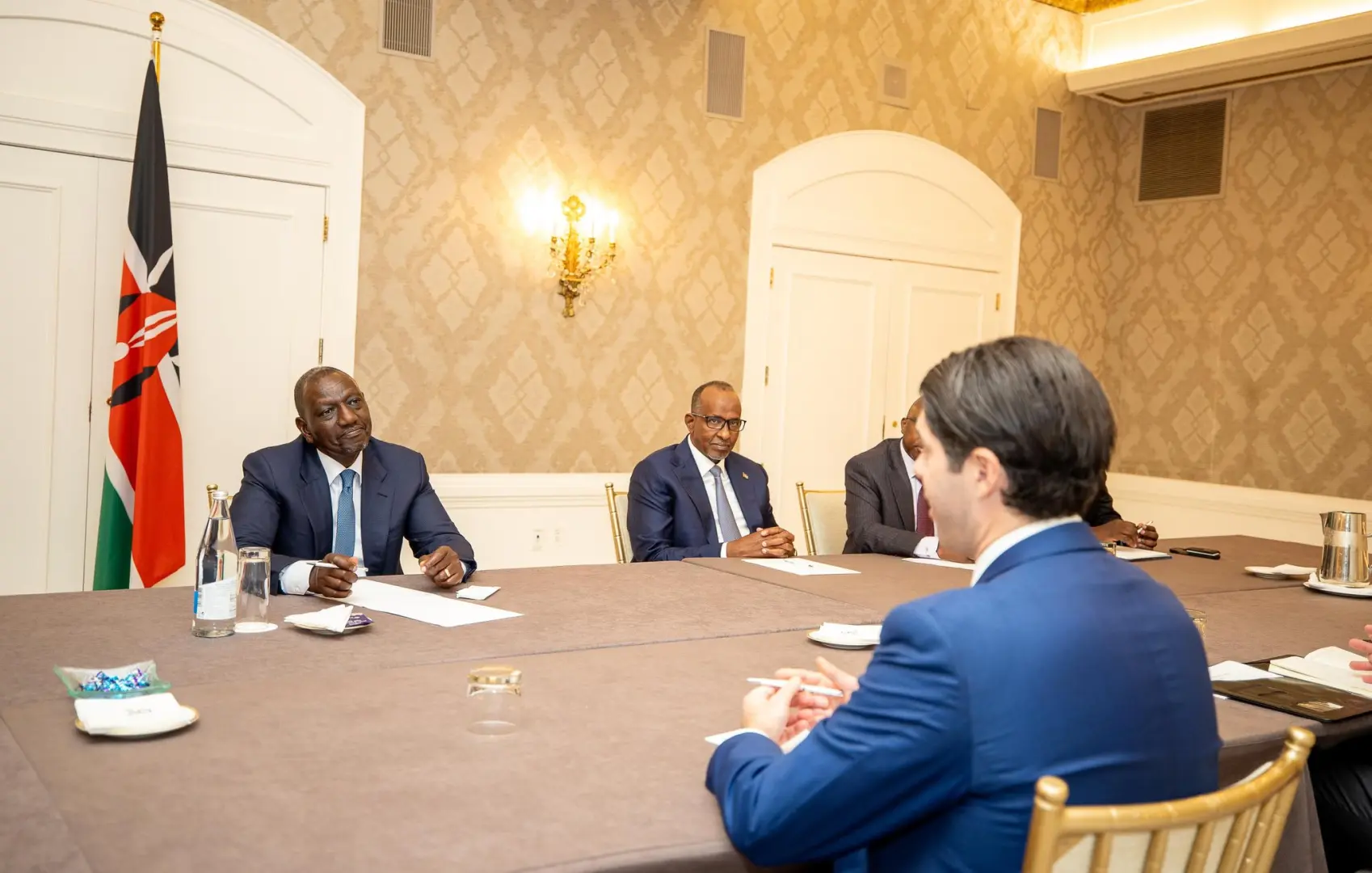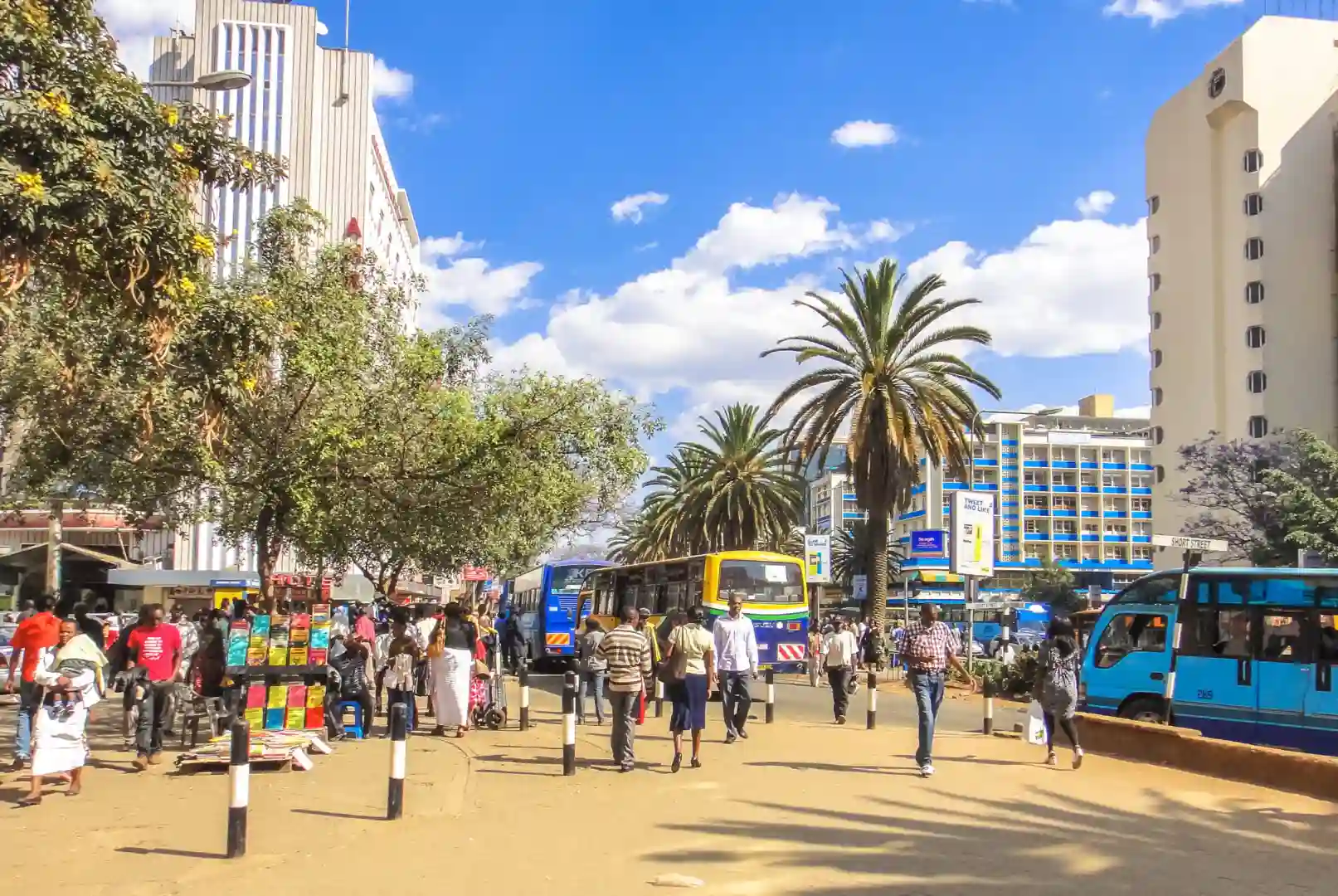Across East Africa, a palpable sense of anticipation filled legislative chambers as finance ministers from the East African Community (EAC) member states presented their national spending plans for the 2025/26 fiscal year. From Kenya’s bustling capital to Rwanda’s hills, Uganda’s resource-rich plains, and Tanzania’s vibrant coast, these budgets are more than just numbers on a spreadsheet; they are blueprints for a future shaped by ambition, resilience, and the deeply human aspirations of millions of citizens. Unveiled against a backdrop of complex global and regional geopolitical tensions and a challenging economic environment, these fiscal roadmaps aim to chart a course towards sustainable growth, enhanced public services, and improved livelihoods for the region’s burgeoning population.
As Finance Minister John Mbadi (Kenya), Matia Kasaija (Uganda), Mwigulu Nchemba (Tanzania), and Yusuf Murangwa (Rwanda) ceremoniously displayed their budget briefcases, they collectively underscored a common theme: “Inclusive economic transformation through domestic resource mobilization and resilient strategic investment for job creation and improved livelihoods.” This shared vision reflects a growing regional commitment to self-reliance and strategic investment, even as external uncertainties persist.
Amidst Global and Regional Headwinds: The EAC’s Fiscal Balancing Act
The East African Community, a dynamic regional bloc comprising Burundi, Kenya, Rwanda, South Sudan, Tanzania, Uganda, and the Democratic Republic of the Congo (DRC), continues to demonstrate remarkable economic resilience. Despite facing significant global headwinds—including lingering effects of supply chain disruptions, geopolitical instability, and fluctuating commodity prices—the EAC recorded an impressive 5.4% economic growth rate in 2024, surpassing the continental average and positioning itself as one of Africa’s fastest-growing regional economies. Projections indicate a further rise to approximately 5.7% in 2025-2026, with East Africa leading the continent at a projected 5.9% growth. This robust outlook is a testament to effective domestic reforms and improved macroeconomic management across the bloc.
However, the path forward is not without its challenges. The African Development Bank Group’s 2025 African Economic Outlook highlights that while the continent is resilient, 15 countries are still grappling with double-digit inflation. Interest payments on public debt now consume an alarming average of 27.5% of government revenue across Africa, up from 19% in 2019, creating immense pressure on national treasuries. Furthermore, the devastating impacts of climate change pose an existential threat; studies show that climate change could reduce the annual GDP of East African nations by an average of about 7% by 2050, affecting agricultural output, food security, and overall economic growth.
These macroeconomic realities translate directly into human terms. Persistent inflation erodes household purchasing power, making everyday necessities more expensive. High debt servicing costs divert crucial funds away from essential public services like healthcare, education, and social safety nets. Climate change, manifested in erratic weather patterns, droughts, and floods, directly threatens the livelihoods of millions of smallholder farmers and exacerbates food insecurity. It is within this complex web of challenges and opportunities that each EAC nation has meticulously crafted its budget.
Kenya’s Bold Budget: Prioritizing Stability Amidst Reform
Kenya’s Cabinet Secretary for Treasury, John Mbadi, unveiled a colossal KSh4.29 trillion (approximately $33.03 billion) budget for the financial year 2025/2026. This ambitious fiscal plan, a 10% increase from the revised KSh 3.9 trillion budget estimates for FY 2024/2025, is anchored in President William Ruto’s Bottom-Up Economic Transformation Agenda (BETA), a flagship blueprint designed to uplift Kenyans from the grassroots.
The government projects to raise KSh3.328 trillion ($25.63 billion) through ordinary revenue and Appropriations-in-Aid (A-i-A) – non-tax revenues collected by government ministries, departments, and agencies (MDAs) from services they provide. This includes various fees, charges, and licenses. The formidable KSh 2.7 trillion tax collection target underscores the Kenya Revenue Authority’s (KRA) intensified efforts to broaden the tax base and enhance compliance, notably through digital initiatives. However, recent public debate has highlighted concerns over proposed revenue-raising measures, such as an increase in the general import duty rate from 25% to 35% and escalating excise duty rates and cumulative Value Added Tax (VAT) on various goods, which could lead to substantially higher final prices for consumers. For the average Kenyan household, these measures mean a tighter squeeze on disposable income, prompting concerns about the cost of living.
In a notable parliamentary reorganization, the military emerged as the biggest financial winner, securing an additional KSh13 billion ($100.1 million) allocation. This significant boost reflects the government’s strategic focus on national security and defense, amidst regional instability and ongoing efforts to combat terrorism. Conversely, critical sectors such as public financial management, education, and sports faced the steepest cuts. While strengthening national security is paramount, reduced allocations to education and sports raise questions about their potential impact on human capital development and youth empowerment, areas vital for long-term national prosperity.
Kenya’s public debt has been a persistent concern, with projections exceeding 60% of GDP. The government’s Medium-Term Debt Management Strategy (MTDS) 2025-2028 aims to bring the debt-to-GDP ratio back to the legally mandated 55% (+5%) by 2028. This involves prioritizing concessional borrowing, diversifying funding sources through instruments like diaspora bonds and sustainability-linked bonds, and enhancing transparency in debt management through integration of systems and comprehensive audits. For Kenyans, prudent debt management is crucial, as it impacts the national budget’s ability to fund essential services rather than being consumed by debt servicing, which is projected to consume over KSh 1.37 trillion in FY2025/2026.
Rwanda’s Growth Trajectory: Investing in Transformation and Self-Reliance
Rwanda’s Finance Minister, Yusuf Murangwa, presented an ambitious budget of Rwf7 trillion (approximately $4.9 billion) for the 2025/26 financial year, marking a significant 21% increase compared to the Rwf5.8 trillion ($4.06 billion) approved in the current fiscal year. This surge in spending underscores the government’s steadfast commitment to strategic projects and development priorities, deeply aligned with its National Strategy for Transformation (NST-2).
A major driver of this budget increase is the continued investment in the flagship Bugesera International Airport project, located about 25 km south of Kigali. The government has allocated a substantial Rwf 699.4 billion (approximately $488 million) for the airport’s construction in the upcoming fiscal year. Despite facing previous delays due to planning changes, funding issues, and the COVID-19 pandemic, the project is now targeting a revised launch in 2027. Once Phase One is complete, the facility is expected to serve 7 million passengers annually, with plans to expand to 14 million passengers by 2032. Qatar Airways, which holds a 60% stake in RwandAir and is a key partner in the airport’s development, is anticipated to play a crucial role in boosting passenger traffic. This massive investment is a bold statement of Rwanda’s ambition to position itself as a major aviation hub in East Africa, enhancing connectivity, tourism, and trade—all directly benefiting citizens through increased opportunities and accessibility.
Beyond this mega-project, key priority areas for increased funding include critical sectors such as agriculture, education, healthcare, housing, and improving electricity connectivity. These investments directly address fundamental human needs: boosting agricultural productivity ensures food security and improves farmer incomes; enhanced education and healthcare contribute to a healthier, more skilled workforce; and expanded access to housing and electricity elevates living standards.
Notably, Rwanda’s budget demonstrates a strong lean towards self-reliance, with the government expecting to raise Rwf4.1 trillion ($2.87 billion) in domestic revenues, accounting for a robust 58% of the total budget. This marks a noticeable shift, as foreign grants, while still present (Rwf 585.2 billion), have fallen to 8.3% of the total budget, down from 12.7% in the previous fiscal year. This reduction, seen as part of a global trend where conservative Western governments are shifting away from foreign aid, is interpreted by Rwanda as a sign of fiscal resilience and a commitment to powering its own development through domestic reforms and strategic international partnerships.
Uganda’s Oil-Fueled Ambitions: Monetizing the Economy for the People
Uganda’s Finance Minister, Matia Kasaija, presented the country’s Ush72.3 trillion (approximately $20 billion) budget, signaling a resolute focus on unlocking the nation’s vast potential through oil and gas activities and ambitious infrastructure development. This budget, relatively unchanged from the Ush72.1 trillion ($19.94 billion) of the current fiscal year, is designed to drive the “full monetization of Uganda’s economy” and is projected to lift the country’s total annual output to a remarkable Ush 250 trillion ($69.16 billion) in the 2025/26 fiscal year, a significant jump from Ush 222.7 trillion ($63 billion) in 2024/25.
Uganda’s economy has demonstrated a robust recovery from previous global, regional, and domestic shocks, growing by 6.1% in the 2023/24 fiscal year and projected to grow by 6.4% in 2024/25, with an even more ambitious target of 7% in FY2025/2026. This growth trajectory is critical as Uganda aims to steadily move towards middle-income status, an aspiration that directly translates to improved quality of life for its citizens.
At the heart of Uganda’s economic transformation lies its burgeoning oil and gas sector. Significant progress has been made on critical projects: the East African Crude Oil Pipeline (EACOP), a 1,443 km export route designed to transport crude oil from Uganda’s Lake Albert oil fields to the Tanzanian port of Tanga, is now 58% complete. Furthermore, an agreement has been signed for the construction of Uganda’s first oil refinery, a 60,000-barrel-per-day facility estimated to cost around 1 to US$2.5 billion. For the average Ugandan, these figures represent the promise of increased government revenues for social services, infrastructure, and job creation, embodying a powerful hope for improved livelihoods.
Beyond oil, substantial investment is directed towards crucial infrastructure projects, including the maintenance of roads and bridges, the rehabilitation of the meter gauge railway, and the construction of the Standard Gauge Railway (SGR), as well as enhancements in water transport. These investments are vital for facilitating trade, reducing transport costs, improving connectivity for businesses and citizens, and ultimately driving broader economic activity. The budget also renews commitment to wealth creation programs, with KSh 2.43 trillion (approximately $672 million) directed towards initiatives like the Parish Development Model (PDM), Emyooga, and the Uganda Development Bank (UDB), designed to uplift communities at the grassroots level.
Tanzania’s Fiscal Prudence: Strengthening Public Finances for Sustainable Development
Tanzania’s Finance Minister, Mwigulu Nchemba, unveiled a Tsh57.3 trillion (approximately $21.93 billion) budget for the 2025/2026 fiscal year, representing a substantial 16% increase from the Tsh49.3 trillion ($18.87 billion) of the current fiscal year. This budget underscores Tanzania’s continued commitment to fiscal prudence, revenue enhancement, and strategic public finance management.
Amongst the key priorities, public debt repayment takes a prominent position, with Tsh14.22 trillion (approximately $5.4 billion) allocated for servicing government debt due for repayment. This focus is crucial for maintaining Tanzania’s favorable credit ratings, which include a B1 rating from Moody’s and a B+ with a stable outlook from Fitch Ratings, both of which position the country as a stable destination for future investments and loans. Effective debt management ensures that the nation’s financial health remains robust, freeing up resources for essential public services rather than being consumed by interest payments.
To enhance revenue collection efficiency, the budget prioritizes the establishment of a unified invoicing system for government payments. This digital initiative aims to streamline payment processes, reduce leakages, and improve transparency, directly benefiting both the government and taxpayers by simplifying compliance and ensuring fair collection. Complementing this, the budget emphasizes improving, integrating, and strengthening the security of electronic systems used for managing public finances and assets. The formulation of a comprehensive Public Assets Management Policy further aims to ensure accountability and optimal utilization of national resources. These reforms, including the rollout of electronic revenue collection systems, have already contributed to a significant increase in non-tax revenue collection over the past five years.
For the average Tanzanian, these public finance management reforms translate into more efficient public service delivery, reduced opportunities for corruption, and a stronger foundation for sustainable development. When government revenues are collected and managed efficiently, it means more funds are available for building schools, stocking hospitals with medicines, improving roads, and providing social safety nets that directly uplift communities. Tanzania’s commitment to enhancing domestic revenue collection, with the Tanzania Revenue Authority (TRA) projected to collect Tsh34.10 trillion (approximately $13 billion), signals a clear path towards greater financial autonomy and reduced dependency on external aid.
A Shared Destiny: The EAC’s Path to Collective Prosperity
The individual budget presentations by Kenya, Rwanda, Uganda, and Tanzania collectively paint a picture of a region striving for inclusive economic transformation. While national priorities and fiscal contexts vary, a common thread weaves through their strategies: the critical importance of domestic resource mobilization and resilient strategic investments to create jobs and improve livelihoods.
Despite impressive strides in economic growth and regional integration, the EAC continues to face challenges that impede its full potential. Persistent non-tariff barriers (NTBs), including cumbersome customs procedures, inconsistent regulatory standards, and bureaucratic hurdles, continue to hinder intra-regional trade. However, efforts are underway to address these, including the deployment of electronic cargo tracking systems and mobile applications for reporting NTBs, fostering greater transparency and efficiency. Infrastructure deficiencies, particularly in road networks and energy connectivity, also remain a significant impediment to seamless cross-border trade and investment.
Yet, opportunities for regional synergy are immense. Increased intra-regional trade, facilitated by ongoing infrastructure projects like the EACOP and the SGR, holds the potential to boost collective income and create a more integrated market of over 300 million people. Harmonized tax policies, joint investment in critical sectors like agriculture and manufacturing, and collaborative efforts to mitigate climate change impacts can further unlock the region’s vast potential.
Ultimately, these national budgets are more than just fiscal documents; they are declarations of intent, reflecting the aspirations of millions across East Africa for a brighter, more prosperous future. Behind every trillion shilling or franc allocated, there is a tangible human impact: a child gaining access to education, a family receiving better healthcare, a farmer improving their yield, or an entrepreneur launching a new business. As the EAC continues its journey of integration, these budgetary choices will shape the continent’s trajectory, demonstrating Africa’s resilience and its unwavering commitment to harnessing its resources for the betterment of its people.
Ready to take your career to the next level? Join our dynamic courses: ACCA, HESI A2, ATI TEAS 7 , HESI EXIT , NCLEX – RN and NCLEX – PN, Financial Literacy!🌟 Dive into a world of opportunities and empower yourself for success. Explore more at Serrari Ed and start your exciting journey today! ✨
photo source: Google
By: Montel Kamau
Serrari Financial Analyst
13th June, 2025
Article, Financial and News Disclaimer
The Value of a Financial Advisor
While this article offers valuable insights, it is essential to recognize that personal finance can be highly complex and unique to each individual. A financial advisor provides professional expertise and personalized guidance to help you make well-informed decisions tailored to your specific circumstances and goals.
Beyond offering knowledge, a financial advisor serves as a trusted partner to help you stay disciplined, avoid common pitfalls, and remain focused on your long-term objectives. Their perspective and experience can complement your own efforts, enhancing your financial well-being and ensuring a more confident approach to managing your finances.
Disclaimer: This article is for informational purposes only and does not constitute financial advice. Readers are encouraged to consult a licensed financial advisor to obtain guidance specific to their financial situation.
Article and News Disclaimer
The information provided on www.serrarigroup.com is for general informational purposes only. While we strive to keep the information up to date and accurate, we make no representations or warranties of any kind, express or implied, about the completeness, accuracy, reliability, suitability, or availability with respect to the website or the information, products, services, or related graphics contained on the website for any purpose. Any reliance you place on such information is therefore strictly at your own risk.
www.serrarigroup.com is not responsible for any errors or omissions, or for the results obtained from the use of this information. All information on the website is provided on an as-is basis, with no guarantee of completeness, accuracy, timeliness, or of the results obtained from the use of this information, and without warranty of any kind, express or implied, including but not limited to warranties of performance, merchantability, and fitness for a particular purpose.
In no event will www.serrarigroup.com be liable to you or anyone else for any decision made or action taken in reliance on the information provided on the website or for any consequential, special, or similar damages, even if advised of the possibility of such damages.
The articles, news, and information presented on www.serrarigroup.com reflect the opinions of the respective authors and contributors and do not necessarily represent the views of the website or its management. Any views or opinions expressed are solely those of the individual authors and do not represent the website's views or opinions as a whole.
The content on www.serrarigroup.com may include links to external websites, which are provided for convenience and informational purposes only. We have no control over the nature, content, and availability of those sites. The inclusion of any links does not necessarily imply a recommendation or endorsement of the views expressed within them.
Every effort is made to keep the website up and running smoothly. However, www.serrarigroup.com takes no responsibility for, and will not be liable for, the website being temporarily unavailable due to technical issues beyond our control.
Please note that laws, regulations, and information can change rapidly, and we advise you to conduct further research and seek professional advice when necessary.
By using www.serrarigroup.com, you agree to this disclaimer and its terms. If you do not agree with this disclaimer, please do not use the website.
www.serrarigroup.com, reserves the right to update, modify, or remove any part of this disclaimer without prior notice. It is your responsibility to review this disclaimer periodically for changes.
Serrari Group 2025












